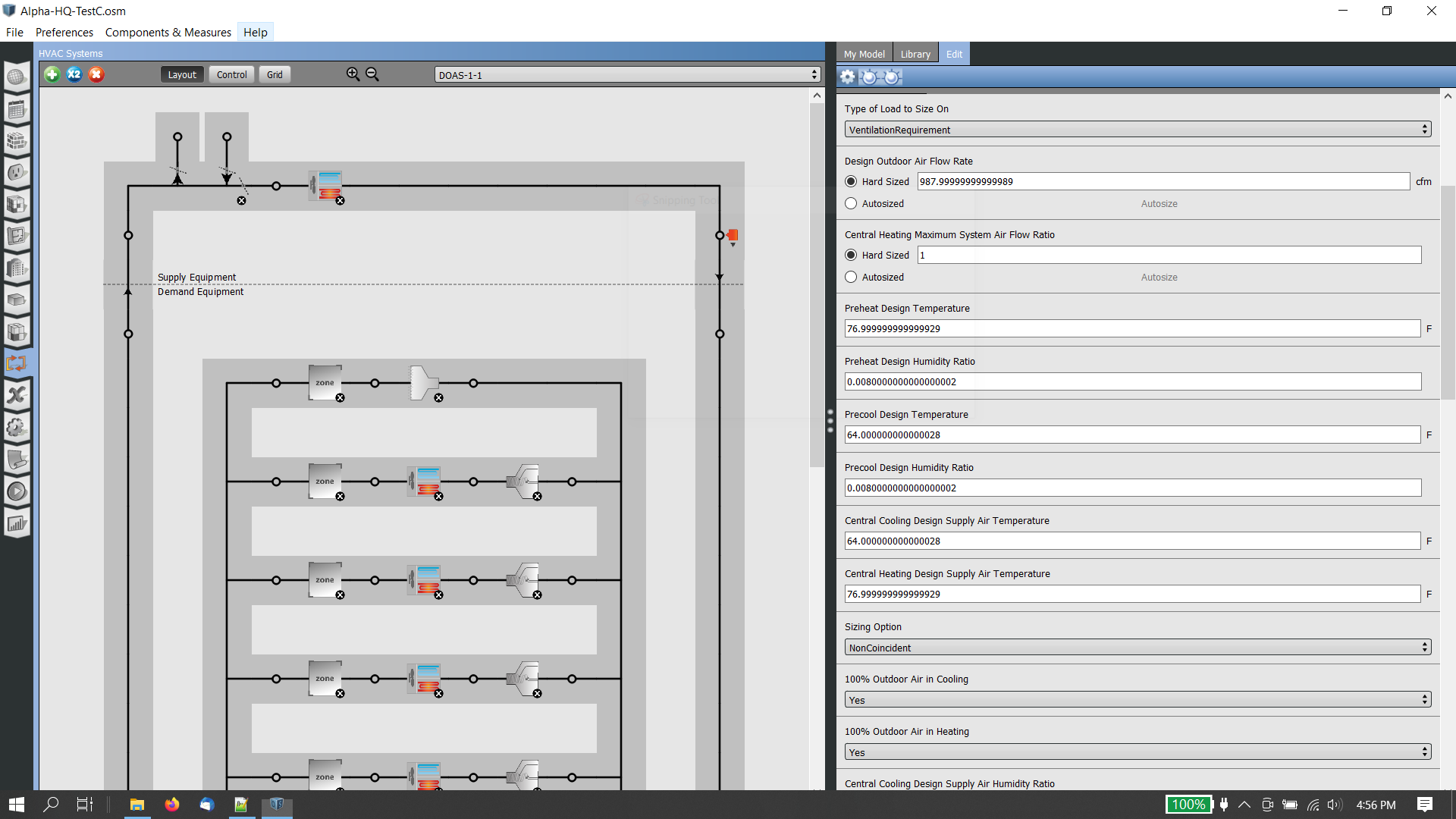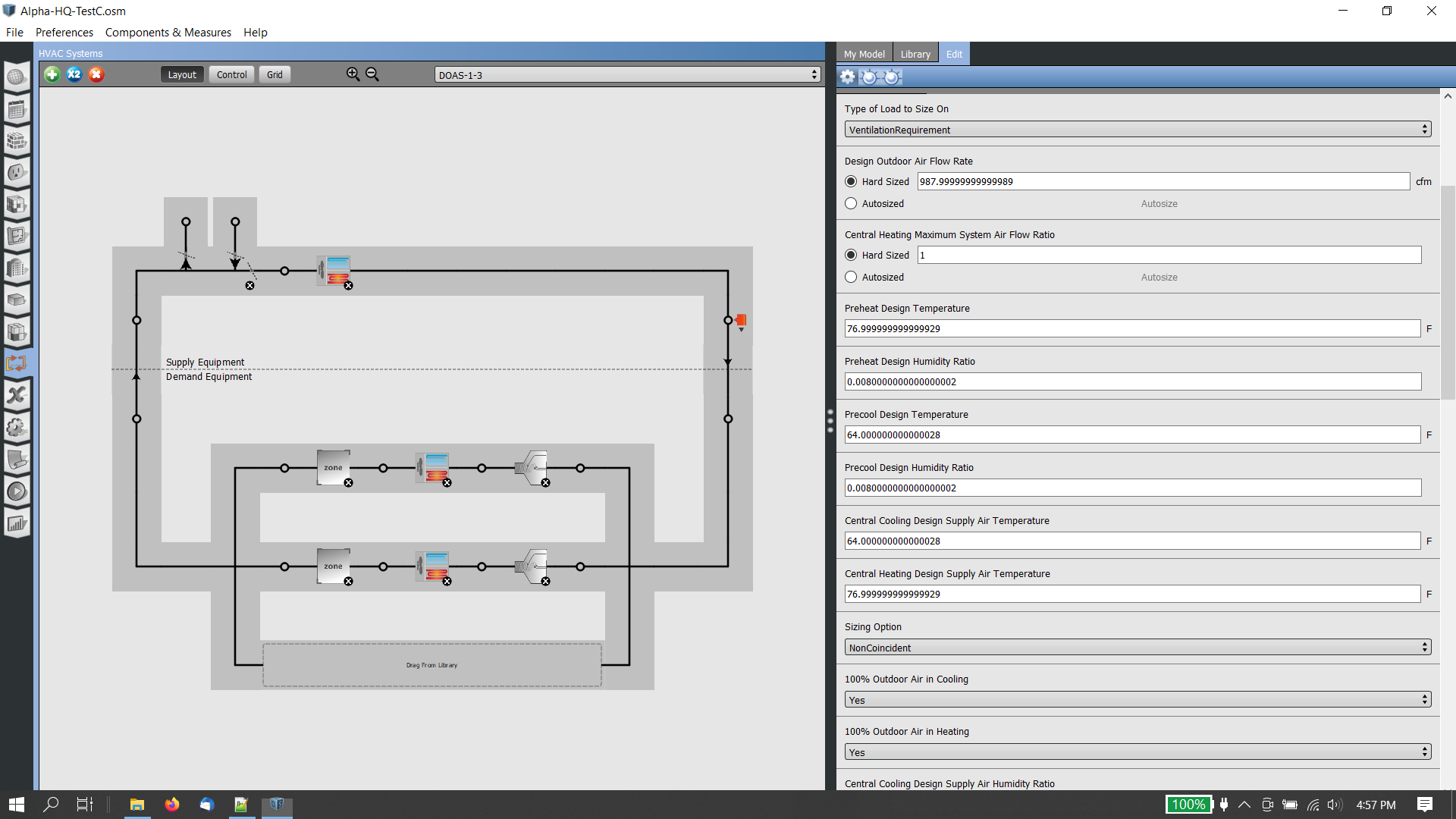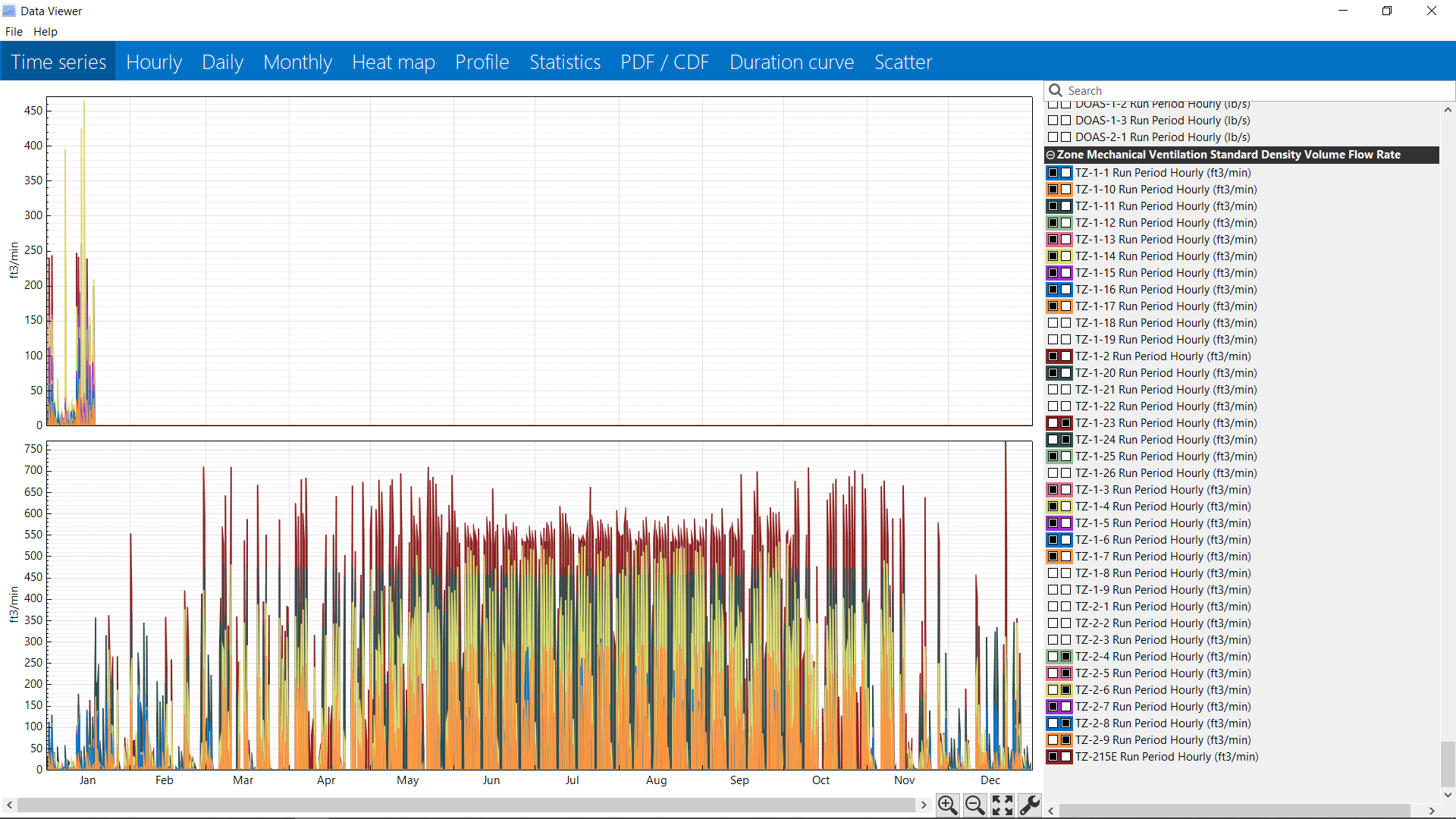So, I have a 2-1/2 story building with a bunch of VRV units:
- VRV-1-1 through VRV-1-26 indoor units are connected to VRV-1-CU outdoor unit
- VRV-2-1 through VRV-2-9 indoor units are connected to VRV-2-CU outdoor unit
- DOAS-1-1 through DOAS-1-3 indoor units are connected to DOAS-1-CU outdoor unit
- DOAS-2-1 indoor unit is connected to DOAS-2-CU outdoor unit
I have also created four HVAC Air Loops which are driven by DOAS-1-1 through DOAS-2-1. For the DOAS-1-1 and DOAS-1-2 HVAC Air Loops, some thermal zones are fed through their associated VRV indoor units, other thermal zones are fed directly from the Air Loop HVAC. Like so (see first branch on demand side):

For DOAS-1-3 and DOAS-2-1, all thermal zones are fed through their associated VRV indoor units. Like so:

Now, when I plot the Mechanical Ventilation (which I assume is the outdoor air flow), I get the following picture:

Essentially, all thermal zones that are part of the DOAS-1-1 and DOAS-1-2 HVAC Air Loop stop receiving outdoor after about January 18 (upper graph), while all thermal zones that are part of DOAS-1-3 and DOAS-2-1 keep receiving outdoor air throughout the year (lower graph).
So I thought, clearly, the difference is that the DOAS-1-1 and DOAS-1-2 HVAC Air Loops have thermal zones that are fed directly, so let's remove those thermal zones from the loops and make them look like the DOAS-1-3 and DOAS-2-1 HVAC Air Loops - unfortunately, that makes no difference.
All four HVAC Air Loops, and pretty much everything else in this model are created from measures, in identical fashion, other than assigning different thermal zones and different VRV models (all identically created, except for performance differences). All relevant schedules are active year round, as far as I can tell, outdoor air is enabled between roughly 8 AM and 10 PM or so, flows and capacities are hard-sized based on VRV models.
I just have no clue how to get past this? And a question that is lurking right behind is why the outdoor air in Jan/Feb and Nov/Dec drops off, when it really should be constant, albeit cycling, throughout the year. Any advice would be much appreciated.




